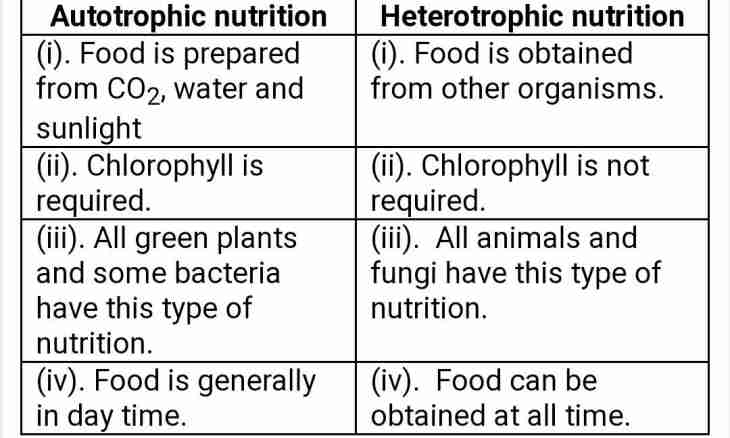The little know what is autotrophs and what role they play in activity of the person and other organisms on our planet. But, actually, their role is huge, it is possible even to say with confidence that they are a basis of all live.
The autotroph is an organism which produces complex organic compounds (for example, carbohydrates, fats and proteins) from simple inorganic molecules with use of energy of light (photosynthesis) or inorganic chemical reactions (chemosynthesis). Thus, autotrophs do not use organic compounds as a power source or a source of carbon. They are capable to split molecules of carbon dioxide for production of organic compounds. Due to replacement of carbon dioxide and creation of low-energy connections the autotrophs create a stock of chemical energy. Most of them use water as reducer, but some can use also other compounds of hydrogen, for example, hydrogen sulfide.
Autotrophs are subdivided into fototrofa and litotrofa (hemotrofa). Fototrofa use light as a power source, and litotrofa oxidize such inorganic compounds as hydrogen sulfide, elementary sulfur, ammonia and bivalent iron.
Autotrophs have fundamental value for food chains of all ecosystems in the world. They take energy from the environment in the form of sunshine or inorganic chemicals and use it for creation of molecules rich with energy. This mechanism is called primary products. Other organisms called heterotrophs use autotrophs as food for activity maintenance. Thus, heterotrophs (all animals, almost all mushrooms and also the majority of bacteria and protozoa) depend on autotrophs. Heterotrophs receive energy due to splitting of organic molecules (carbohydrates, fats and proteins) received through food. So, autotrophs are the first tier in a food pyramid and also primary producers of organic matter in the biosphere.

